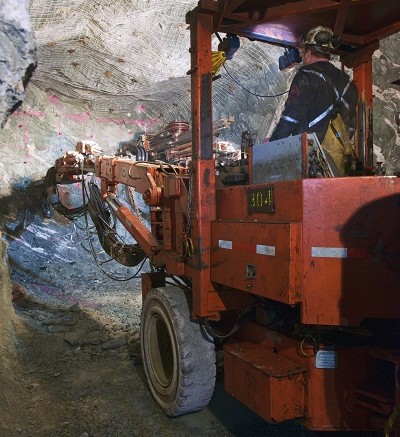BMO Capital Markets’ research team is shaking things up this new year.
In a report entitled “All your eggs in one basket,” research analyst Brian Quast picks up coverage on single-asset gold producers, and downgrades others.
The analyst’s top picks are battered stocks that not long ago enjoyed a more exalted market status.
San Gold (SGR-T) comes in as the top pick, as the stock “has simply been beaten up too much,” Quast writes. He expects a rebound sometime over the next year and a half.
“On the other end of the spectrum, Allied Nevada Gold (ANV-T, ANV-X) is initiated with an ‘underperform’ rating . . . owing to what appears to be market over-infatuation,” the report continues.
Aurizon Mines (ARZ-T, AZK-X) and Lake Shore Gold (LSG-T, LSG-X) also suffer bearish viewpoints, and were downgraded one notch to “underperform.”
“After taking into account many financial metrics, political risk, management’s ability to meet production guidance, M&A potential and many other factors, it seems that Allied Nevada, Aurizon and Lake Shore are at unsustainable valuations, compared to other single-asset producing peers,” the report says.
Quast takes a more favourable view of Kirkland Lake Gold (KGI-T), Rio Alto Mining (RIO-T) and Brigus Gold (BRD-T, BRD-X), all of which will be covered, and initiated with a “market perform” rating.
Kirkland Lake Gold and Brigus both fit the beaten-up mould, as operational issues at their key assets have led to languishing stock prices. Despite the picture for the companies improving, however, Quast doesn’t believe they are compelling enough to earn a “market outperform” rating.
As for Rio Alto, the stock is a bit of a victim of its own success, according to Quast, who argues that its recent strong performance created a valuation level that doesn’t leave enough room for upside.
Among its group of downgrades, BMO cut Lake Shore Gold’s target price to 75¢ from $1.20, because the net present value calculated by Quast declined on reduced confidence in gold grades going forward, and the company won’t expand beyond 3,000 tonnes per day until it can raise enough capital. The new valuation means that Lake Shore is trading at a premium to its peers.
Aurizon Mines was downgraded and had its target price reduced to $3.75 from $4.40, with Quast predicting limited upside owing to limited hoist capacity brought on by a deepening of its shaft.
“Normalized mining and production rates appear unlikely to be realized before the end of 2013,” he writes.
Alamos Gold (AGI- T) was also downgraded, but rather than falling to “underperform,” the company’s stock went down to “market perform” from “outperform,” and saw its target price cut to $21.50 from $25. This reduction came after Quast and his team lowered target multiples in-line with other single-asset producers.
The single asset producers theme is prevalent throughout in the report. Quast points out that if an investor bought all of the single asset companies covered by BMO, they would have outperformed all but one of the senior producers.
Given the current situation of tight capital markets and a risk-off approach, this may seem strange, as seniors should have better access to capital and the best management teams, and offer increased diversification relative to single-asset producers.
But over the last few years the seniors have suffered the most, with Kinross Gold (K-T, KGC-N), Gold Fields (GFI-N) and AngloGold Ashanti (AU-N) all struggling from either acquisition fever or labour issues.
But this is not so with smaller, single-minded producers.
“A single asset brings a singular focus,” Quast writes. “Put another way, ten companies with ten management and operations teams still outperform one large company with ten mines, on average.”
But the report does not ignore that risks affecting all miners have a more dramatic effect on single-asset producers, with a lack of diversification possibly making it harder for a single-asset company to slog through tough times.
Other differences between market reactions to seniors versus single-asset companies include the fact that exploration and operational updates are more important for single-asset producers.
This means that investment in a single-asset producer requires more operational diligence on the part of the investor than is necessary for a senior gold producer.


Be the first to comment on "BMO takes a fresh look at single-asset miners"